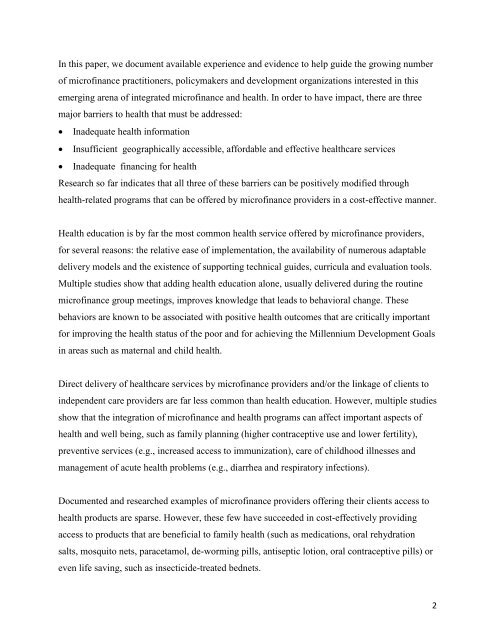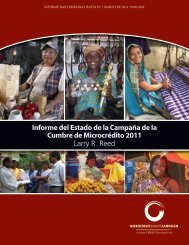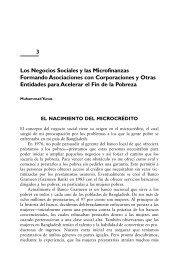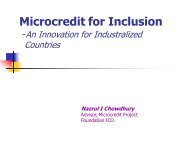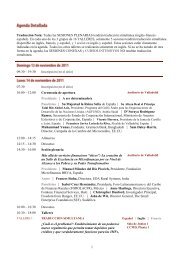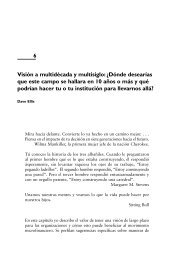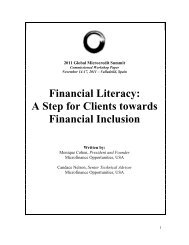Integrating Microfinance and Health - Global Microcredit Summit 2011
Integrating Microfinance and Health - Global Microcredit Summit 2011
Integrating Microfinance and Health - Global Microcredit Summit 2011
You also want an ePaper? Increase the reach of your titles
YUMPU automatically turns print PDFs into web optimized ePapers that Google loves.
In this paper, we document available experience <strong>and</strong> evidence to help guide the growing numberof microfinance practitioners, policymakers <strong>and</strong> development organizations interested in thisemerging arena of integrated microfinance <strong>and</strong> health. In order to have impact, there are threemajor barriers to health that must be addressed: Inadequate health information Insufficient geographically accessible, affordable <strong>and</strong> effective healthcare services Inadequate financing for healthResearch so far indicates that all three of these barriers can be positively modified throughhealth-related programs that can be offered by microfinance providers in a cost-effective manner.<strong>Health</strong> education is by far the most common health service offered by microfinance providers,for several reasons: the relative ease of implementation, the availability of numerous adaptabledelivery models <strong>and</strong> the existence of supporting technical guides, curricula <strong>and</strong> evaluation tools.Multiple studies show that adding health education alone, usually delivered during the routinemicrofinance group meetings, improves knowledge that leads to behavioral change. Thesebehaviors are known to be associated with positive health outcomes that are critically importantfor improving the health status of the poor <strong>and</strong> for achieving the Millennium Development Goalsin areas such as maternal <strong>and</strong> child health.Direct delivery of healthcare services by microfinance providers <strong>and</strong>/or the linkage of clients toindependent care providers are far less common than health education. However, multiple studiesshow that the integration of microfinance <strong>and</strong> health programs can affect important aspects ofhealth <strong>and</strong> well being, such as family planning (higher contraceptive use <strong>and</strong> lower fertility),preventive services (e.g., increased access to immunization), care of childhood illnesses <strong>and</strong>management of acute health problems (e.g., diarrhea <strong>and</strong> respiratory infections).Documented <strong>and</strong> researched examples of microfinance providers offering their clients access tohealth products are sparse. However, these few have succeeded in cost-effectively providingaccess to products that are beneficial to family health (such as medications, oral rehydrationsalts, mosquito nets, paracetamol, de-worming pills, antiseptic lotion, oral contraceptive pills) oreven life saving, such as insecticide-treated bednets.2


